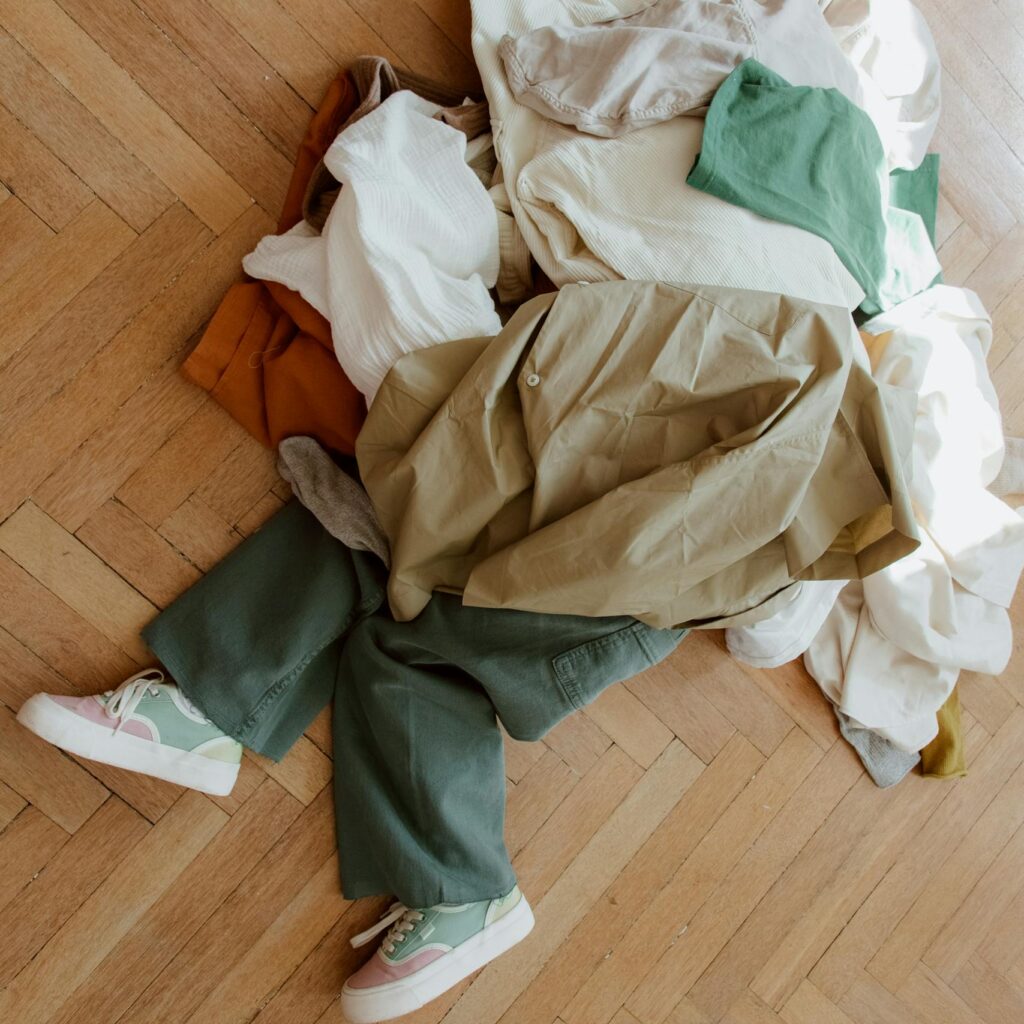Fast fashion is everywhere. It’s cheap, it’s trendy, and it’s tempting. But behind that $5 t-shirt is a whole lot of environmental and ethical damage.
But there’s another way to shop: slow fashion. It’s better for the planet, better for workers, and (surprise!) better for your wallet in the long run.
So what’s the difference, and why the heck should you care?

Fast Fashion: Cheap, Fast, and Wasteful
Fast fashion is all about producing massive volumes of clothing, quickly and cheaply. Like trendy pieces made from synthetic fabrics, designed to be worn a handful of times and then tossed.
Here are the issues with this system:
🌲 Pollution: Fast fashion is one of the top polluting industries in the world. It uses toxic dyes, synthetic materials, and enormous amounts of water.
🌲 Microplastics: Most fast fashion is made of polyester, which sheds microplastics into our water systems every time you do laundry.
🌲 Exploitation: Many fast fashion brands rely on underpaid labor in unsafe conditions. Workers are often exposed to harmful chemicals without protection.
🌲 Waste: Over 92 million tons of textile waste are generated globally every year. Most of it ends up in landfills or incinerators.
Slow Fashion: Thoughtful, Ethical, and Built to Last
Slow fashion is about quality over quantity. These are pieces made with care – often from natural or recycled materials – and designed to last for years, not weeks.
What makes it even better?
🌲 Lower environmental impact: Many slow fashion brands use organic cotton, hemp, linen, or recycled fabrics that require far fewer resources.
🌲 Ethical production: Workers are paid fairly, labor practices are transparent, and working conditions are safer.
🌲 Timeless style: Rather than chasing trends, slow fashion often focuses on classic styles and versatile pieces for everyday, and for years to come.
Why Quality Matters
A well-made garment costs more upfront, but it’s an investment. When you choose better materials and better construction, your clothes last longer, look better, and feel more comfortable.
Let’s say you buy a $20 fast fashion sweater that pills after two washes and loses its shape. You’ll probably replace it in a few months. Or you could spend $80 on one made with organic cotton or wool, and wear it happily for years.
Buying less and choosing better isn’t just more sustainable, it’s also way more satisfying. Imagine only owning clothing that you really love, like a cozy sweater you want to wear every day. And having it last for years.
Slow Fashion Brands Worth Checking Out
🌲 People Tree – One of the OGs of ethical fashion, with organic cotton, fair trade practices, timeless styles, and strong sustainability credentials.
🌲 Armedangels – German brand with transparent supply chains focused on quality, long-lasting modern basics using sustainable fabrics like organic cotton, Tencel, and recycled fibers.
🌲 Komodo – One of the original ethical fashion pioneers, making timeless, durable clothing and socks from GOTS-certified organic cotton with fair production practices in Portugal.
🌲 Asket – Minimalist and made-to-last basics with a focus on permanent collections (not trends), repair programs, and full supply-chain and cost transparency.
…and basically any other brand mentioned in my blog!

When you shop slow, you’re not just buying clothes but also supporting a system that values people and the planet. Fewer impulse buys, better fabrics, and pieces you’ll actually love wearing = a win all around.
